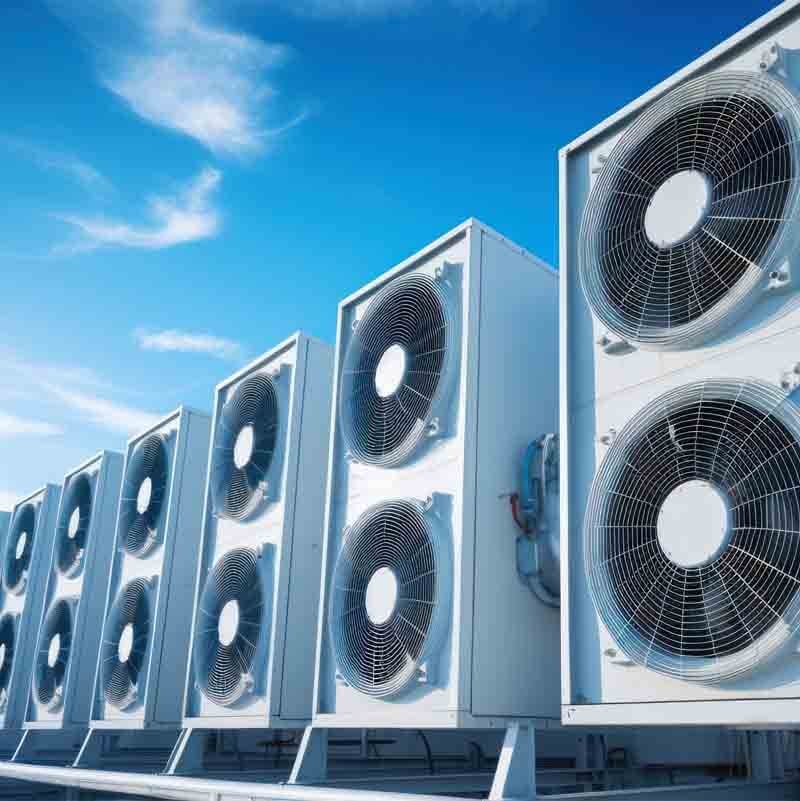Traditional yellow bag waste disposal poses a number of issues for busy hospitals. From the obvious unpleasantness of carrying the bags around wards and the cumulative storage of waste in central bins, to the hefty paperwork required to ensure compliant removal from your site to keep the Environment Agency happy, the drain on already-stretched resources is considerable – yet avoidable.
Month: July 2020
Efficiency is a priority when it comes to heating & AC in commercial properties – but right now, your system could play a key role in keeping everyone in your premises safe and healthy. Here’s our digest of some of the key industry recommendations to consider when managing the air conditioning in your organisation.
1. Switch air handling units from ‘recirculation’ to 100% ‘outdoor air’
Most systems work by recycling the air to control temperature around your building, which until now has been the default setting for most businesses. However, with the threat of COVID-19 still ever-present, moving towards a ‘fresh air’ commercial air conditioning system is the recommended approach for reducing risk and promoting hygiene best practices. It does mean that temperatures are harder to maintain, but the health and safety of people in your care should be your top priority at the moment. “It is recommended that any ventilation or air conditioning system that normally runs with a recirculation mode should now be set up to run on full outside air where this is possible. The potential benefit to public health at this time outweighs the reduction in energy efficiency caused by not recirculating air.” Summary of the latest guidance from CIBSE on Heating & AC and helping to reduce the spread of COVID-19 It’s important to supply as much outside fresh air as is reasonably possible – especially in small office buildings. The key thing to consider here is the amount of fresh air supplied per person. If the number of employees in your premises is reduced (due to home working, etc.), do not concentrate the remaining employees into smaller areas. Instead, maintain or even expand the level of social distancing between them in order to promote the ventilation system’s circulation and maximise overall ‘air cleaning’ effect.2. Switch ventilation to nominal speed
Aim to do this at least two hours before the building is due to be used, and switch to lower speed two hours after the building is vacated. This allows for circulation to reach optimum levels before staff and visitors enter your building, before safely reaching a steady (energy-saving) base level after they have left.3. Do not switch ventilation off overnight or at weekends
Keep systems running at lower speed during ‘off-peak’ periods to save on energy, but maintain a steady level of circulation to keep air moving in and out of the building and avoid any build-up of airborne viral aerosols. You should also operate your system so that fans are continuously on to maintain good air quality, and do not change heating, cooling and possible humidification set-points. The general advice is to supply as much outside air as possible. Expanded operation times are recommended for buildings with mechanical ventilation. Consider keeping the ventilation on 24/7 with lower ventilation rates when people are absent (CIBSE Journal).4. Ensure regular airing with windows
You should open windows regularly even in mechanically ventilated buildings, but in buildings without mechanical ventilation systems it is particularly important to actively use operable windows much more than normal, even when this causes some thermal discomfort. Window airing is an efficient way to boost air exchange rates, and can further boost ventilation alongside the measures above.5. Inspect your heat recovery equipment
Ensure any leaks are under control and check important components like your heat pump – then contact a Heating & AC professional if you have any concerns. As well as posing potential risks to the efficiency of your air conditioning units, ignoring what can seem like minor annoyances could lead to more serious problems later.6. Do not plan duct cleaning for this period
There have been lots of recommendations to clean ventilation ducts in order to avoid COVID-19 transmission via ventilation systems. While always good practice – and important to plan in over coming months – duct cleaning alone is not effective against room-to-room infection because the ventilation system is not a contamination source. Viruses attached to small particles will not deposit easily in ventilation ducts. In any case they will be carried out by the airflow, and will become unviable over time.7. Replace central outdoor air and extractor air filters
Carry this out as per your normal plans, according to your current maintenance and servicing schedule. Regular filter replacement and maintenance works should be carried out with common protective measures but the recommendation is to have these tasks completed as part of a maintenance contract to ensure efficiency and regularity.Similar blogs you may like
Loading...
The hidden costs of outdated HVAC systems in hospitality settings
With the hospitality sector looking to stay compliant with changing regulations, and growing pressure to reduce running costs as well as carbon footprints, it becomes clearer that replacing older, less reliable HVAC systems could be the best move for your business.
Taking care of HVAC systems with Mitsubishi Diamond Quality Partner status
Thanks to JLA’s high quality standards carried out by our nationwide network of engineers, we have received the new Mitsubishi Diamond Quality Partner status.



